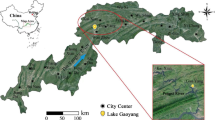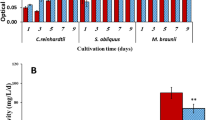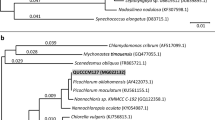Abstract
Global energy demand is increasing every day and most is still derived from non-renewable sources. Therefore, sustainable alternatives are sought to produce biofuels, such as biodiesel. Several studies have demonstrated the potential of microalgae and cyanobacteria to produce biodiesel and pigments. These pigments, such as lutein and astaxanthin, have a high commercial value and can economically support the production of biodiesel. However, few studies have explored the potential of cyanobacteria collected in thermal water. In these microorganisms, both biomass and metabolites production can be altered by the culture form. Thus, a cosmopolitan filamentous cyanobacterium (Geitlerinema amphibium) from thermal water was collected and isolated to evaluate its potential to produce fatty acids, biodiesel, and pigments in two culture media. G. amphibium was cultured in WC (Wright's Cryptophyte) and BBM (Bold’s Basal Medium) media. Thermal stress (40 °C for 48 h) was applied to the medium, which generated higher productivity of the biomass in BBM. The cyanobacterium contained higher biodiesel content in the WC medium and higher pigment content in the BBM medium. Thermal stress increased the biodiesel content by 350%, but decreased pigment content. Two pigments with high commercial value (astaxanthin and lutein) were identified. G. amphibium produced up to 2.74 mg g−1 of astaxanthin and 5.49 mg g−1 of lutein, which is seven times more lutein than Marigold, currently the main raw material used commercially. Therefore, G. amphibium has the potential to produce biodiesel, astaxanthin, and lutein concomitantly.


Similar content being viewed by others
References
D’Alessandro EB, Antoniosi Filho NR (2016) Concepts and studies on lipid and pigments of microalgae: a review. Renew Sustain Energy Rev 58:832–841. https://doi.org/10.1016/j.rser.2015.12.162
Jensen GS, Ginsberg DI, Drapeau MS (2001) Bluegreen algae as an immuno-enhancer and biomodulator. J Nutraceuticals Nutr 3:24–30
Kreitlow S, Mundt S, Lindequist U (1999) Cyanobacteria—a potential source of new biologically active substances. J Biotechnol 70:61–63. https://doi.org/10.1016/S0168-1656(99)00058-9
Dahms HU, Ying X, Pfeiffer C (2006) Antifouling potential of cyanobacteria: a mini-review. Biofouling 22:317–327. https://doi.org/10.1080/08927010600967261
Swain SS, Paidesetty SK, Padhy RN (2017) Antibacterial, antifungal and antimycobacterial compounds from cyanobacteria. Biomed Pharmacother 90:760–776. https://doi.org/10.1016/J.BIOPHA.2017.04.030
Komárek J, Anagnostidis K (2005) Cyanoprokaryota 2. Teil: Oscillatoriales. In: Büdel B, Krienitz L, Gärtner G, Schagerl M (eds) Süßwasserflora von Mitteleuropa. Elsevier Spektrum Akademischer Verlag, Munique, p 759
Guiry MD, Guiry GM (2017) AlgaeBase. In: World-wide Electron. Publ. Natl. Univ. Ireland, Galway. https://www.algaebase.org/search/species/detail/?species_id=24844&distro=y#distro. Accessed 29 Nov 2018
Romero-Villegas GI, Fiamengo M, Acién Fernández FG, Molina Grima E (2018) Utilization of centrate for the outdoor production of marine microalgae at pilot-scale in flat-panel photobioreactors. J Biotechnol 284:102–114. https://doi.org/10.1016/J.JBIOTEC.2018.08.006
Renugadevi K, Valli Nachiyar C, Sowmiya P, Sunkar S (2018) Antioxidant activity of phycocyanin pigment extracted from marine filamentous cyanobacteria Geitlerinema sp TRV57. Biocatal Agric Biotechnol 16:237–242. https://doi.org/10.1016/J.BCAB.2018.08.009
Patel HM, Rastogi RP, Trivedi U, Madamwar D (2018) Structural characterization and antioxidant potential of phycocyanin from the cyanobacterium Geitlerinema sp. H8DM. Algal Res 32:372–383. https://doi.org/10.1016/J.ALGAL.2018.04.024
Tinpranee N, Incharoensakdi A, Phunpruch S (2018) Screening cyanobacteria from marine coastal waters of Thailand for biohydrogen production. J Appl Phycol 30:3471–3481. https://doi.org/10.1007/s10811-018-1490-6
Campos JEG, Almeida L (2012) Balanço térmico aplicado à recarga artificial dos aquíferos da região de Caldas Novas, estado de Goiás. Brazilian J Geol 42:196–207
Andersen RA (2005) Algal culturing techniques. Elsevier Academic Press, Burlington
Menezes RS, Soares AT, Marques Júnior JG et al (2016) Culture medium influence on growth, fatty acid, and pigment composition of Choricystis minor var. minor: a suitable microalga for biodiesel production. J Appl Phycol 28:2679–2686. https://doi.org/10.1007/s10811-016-0828-1
D’Alessandro EB, Soares AT, Da Costa DC et al (2018) A thermal water microalga: Eutetramorus planctonicus as a promising source of fatty acids and lutein. J Environ Chem Eng 6:6707–6713. https://doi.org/10.1016/j.jece.2018.10.038
D’Alessandro EB, Soares AT, Pereira J, Antoniosi Filho NR (2018) Viability of biodiesel production from a thermophilic microalga in conventional and alternative culture media. Brazilian J Bot 41:319–327. https://doi.org/10.1007/s40415-018-0459-7
Union European (2010) EN 14214 Automotive fuels—fatty acid methyl esters (FAME) for diesel engines—requirements and test methods. Eur. Comm, Satandardization
Soares AT, Marques Júnior JG, Lopes RG et al (2016) Improvement of the extraction process for high commercial value pigments from Desmodes mus sp. Microalgae J Braz Chem Soc 27:1083–1093. https://doi.org/10.5935/0103-5053.20160004
Carvalho LF, Oliveira MS, Costa JAV (2014) Evaluation of the influence of nitrogen and phosphorus nutrients in the culture and production of biosurfactants by microalga Spirulina. Int J Eng Res Appl 4:90–98
Bogen C, Klassen V, Wichmann J et al (2013) Identification of Monoraphidium contortum as a promising species for liquid biofuel production. Bioresour Technol 133:622–626. https://doi.org/10.1016/j.biortech.2013.01.164
Jodłowska S, Latała A (2013) Combined effects of light and temperature on growth, photosynthesis, and pigment content in the mat-forming cyanobacterium Geitlerinema amphibium. Photosynthetica 51:202–214. https://doi.org/10.1007/s11099-013-0019-0
Jacob-Lopes E, Cacia Ferreira Lacerda LM, Franco TT (2008) Biomass production and carbon dioxide fixation by Aphanothece microscopica Nägeli in a bubble column photobioreactor. Biochem Eng J 40:27–34. https://doi.org/10.1016/j.bej.2007.11.013
Smith-Bädorf HD, Chuck CJ, Mokebo KR et al (2013) Bioprospecting the thermal waters of the Roman baths: isolation of oleaginous species and analysis of the FAME profile for biodiesel production. AMB Express 3:9. https://doi.org/10.1186/2191-0855-3-9
Zhao Y, Wang H-P, Han B, Yu X (2019) Coupling of abiotic stresses and phytohormones for the production of lipids and high-value by-products by microalgae: a review. Bioresour Technol 274:549–556. https://doi.org/10.1016/J.BIORTECH.2018.12.030
Batchu NK, Khater S, Patil S et al (2019) Whole genome sequence analysis of Geitlerinema sp. FC II unveils competitive edge of the strain in marine cultivation system for biofuel production. Genomics 111:465–472. https://doi.org/10.1016/J.YGENO.2018.03.004
Guedes AC, Amaro HM, Barbosa CR et al (2011) Fatty acid composition of several wild microalgae and cyanobacteria, with a focus on eicosapentaenoic, docosahexaenoic and α-linolenic acids for eventual dietary uses. Food Res Int 44:2721–2729. https://doi.org/10.1016/J.FOODRES.2011.05.020
Li H-Y, Lu Y, Zheng J-W et al (2014) Biochemical and genetic engineering of diatoms for polyunsaturated fatty acid biosynthesis. Mar Drugs 12:153–166. https://doi.org/10.3390/md12010153
Nalley JO, O’Donnell DR, Litchman E (2018) Temperature effects on growth rates and fatty acid content in freshwater algae and cyanobacteria. Algal Res 35:500–507. https://doi.org/10.1016/J.ALGAL.2018.09.018
Knothe G (2005) Dependence of biodiesel fuel properties on the structure of fatty acid alkyl esters. Fuel Process Technol 86:1059–1070. https://doi.org/10.1016/j.fuproc.2004.11.002
Mühling M, Belay A, Whitton BA (2005) Variation in fatty acid composition of Arthrospira (Spirulina) strains. J Appl Phycol 17:137–146. https://doi.org/10.1007/s10811-005-7213-9
Volkmann H, Imianovsky U, Furlong EB et al (2007) Influence of desalinator wastewater for the cultivation of Arthrospira platensis. Fatty acids profile. Grasas Aceites 58:396–401
Sharma NK, Rai AK, Stal LJ (2014) Cyanobacteria: an economic perspective, 1st edn. Wiley Blackwell, Chichester
D´Agosto M de A, Vieira da Silva MA, de Oliveira CM et al (2015) Evaluating the potential of the use of biodiesel for power generation in Brazil. Renew Sustain Energy Rev 43:807–817. https://doi.org/10.1016/j.rser.2014.11.055
Satyanarayana KG, Mariano AB, Vargas JVC (2011) A review on microalgae, a versatile source for sustainable energy and materials. Int J Energy Res 35:291–311. https://doi.org/10.1002/er.1695
Mata TM, Martins AA, Caetano NS (2010) Microalgae for biodiesel production and other applications: a review. Renew Sustain Energy Rev 14:217–232. https://doi.org/10.1016/j.rser.2009.07.020
Minhas AK, Hodgson P, Barrow CJ, Adholeya A (2016) A review on the assessment of stress conditions for simultaneous production of microalgal lipids and carotenoids. Front Microbiol 7:546. https://doi.org/10.3389/fmicb.2016.00546
Saini DK, Pabbi S, Shukla P (2018) Cyanobacterial pigments: perspectives and biotechnological approaches. Food Chem Toxicol 120:616–624. https://doi.org/10.1016/J.FCT.2018.08.002
Takaichi S (2011) Carotenoids in algae: distributions, biosyntheses and functions. Mar Drugs 9:1101–1118. https://doi.org/10.3390/md9061101
Kumar M, Kulshreshtha J, Singh GP (2011) Growth and biopigment accumulation of cyanobacterium Spirulina platensis at different light intensities and temperature. Brazilian J Microbiol 42:1128–1135. https://doi.org/10.1590/S1517-83822011000300034
Takaichi S, Mochimaru M (2007) Carotenoids and carotenogenesis in cyanobacteria: unique ketocarotenoids and carotenoid glycosides. Cell Mol Life Sci 64:2607–2619. https://doi.org/10.1007/s00018-007-7190-z
Latifi A, Ruiz M, Zhang C-C (2009) Oxidative stress in cyanobacteria. FEMS Microbiol Rev 33:258–278. https://doi.org/10.1111/j.1574-6976.2008.00134.x
Zhao Y, Yue C, Geng S et al (2019) Role of media composition in biomass and astaxanthin production of Haematococcus pluvialis under two-stage cultivation. Bioprocess Biosyst Eng 42:593–602. https://doi.org/10.1007/s00449-018-02064-8
Paliwal C, Ghosh T, George B et al (2016) Microalgal carotenoids: Potential nutraceutical compounds with chemotaxonomic importance. Algal Res 15:24–31. https://doi.org/10.1016/J.ALGAL.2016.01.017
Erdoğan A, Demirel Z, Eroğlu AE, Dalay MC (2016) Carotenoid profile in Prochlorococcus sp. and enrichment of lutein using different nitrogen sources. J Appl Phycol 28:3251–3257. https://doi.org/10.1007/s10811-016-0861-0
Mary Leema JT, Kirubagaran R, Vinithkumar NV et al (2010) High value pigment production from Arthrospira (Spirulina) platensis cultured in seawater. Bioresour Technol 101:9221–9227. https://doi.org/10.1016/J.BIORTECH.2010.06.120
Rodrigues DB, Menezes CR, Mercadante AZ et al (2015) Bioactive pigments from microalgae Phormidium autumnale. Food Res Int 77:273–279. https://doi.org/10.1016/j.foodres.2015.04.027
Lin J-H, Lee D-J, Chang J-S (2015) Lutein production from biomass: marigold flowers versus microalgae. Bioresour Technol 184:421–428. https://doi.org/10.1016/j.biortech.2014.09.099
Shah MMR, Liang Y, Cheng JJ, Daroch M (2016) Astaxanthin-producing green microalga Haematococcus pluvialis: from single cell to high value commercial products. Front Plant Sci 7:531. https://doi.org/10.3389/fpls.2016.00531
Jeevanantham G, Vinoth M, Hussain JM et al (2019) Biochemical characterization of five marine cyanobacteria species for their biotechnological applications. J Pharmacogn Phytochem 8:635–640
Olaizola M (2003) Commercial development of microalgal biotechnology: from the test tube to the marketplace. Biomol Eng 20:459–466. https://doi.org/10.1016/S1389-0344(03)00076-5
Del Río E, Acién FG, García-Malea MC et al (2008) Efficiency assessment of the one-step production of astaxanthin by the microalga Haematococcus pluvialis. Biotechnol Bioeng 100:397–402. https://doi.org/10.1002/bit.21770
Author information
Authors and Affiliations
Corresponding author
Ethics declarations
Conflict of interest
The authors declare that they have no conflict of interest.
Additional information
Publisher's Note
Springer Nature remains neutral with regard to jurisdictional claims in published maps and institutional affiliations.
Rights and permissions
About this article
Cite this article
D’Alessandro, E.B., Soares, A.T., de Oliveira D’Alessandro, N.C. et al. Potential use of a thermal water cyanobacterium as raw material to produce biodiesel and pigments. Bioprocess Biosyst Eng 42, 2015–2022 (2019). https://doi.org/10.1007/s00449-019-02196-5
Received:
Accepted:
Published:
Issue Date:
DOI: https://doi.org/10.1007/s00449-019-02196-5




